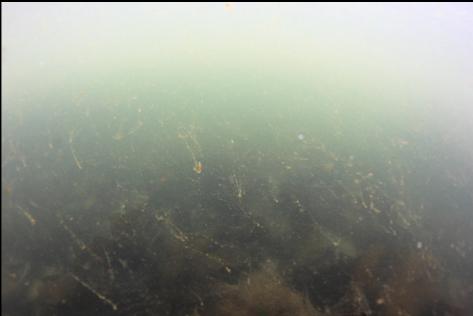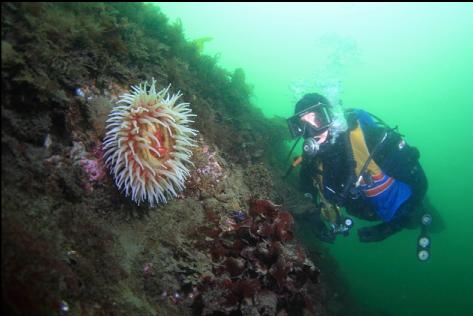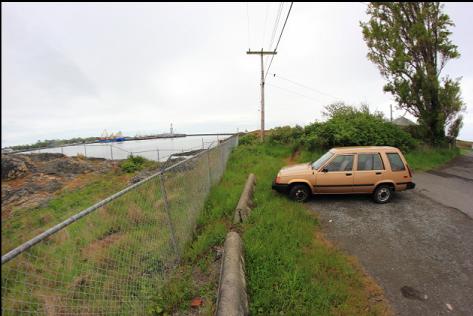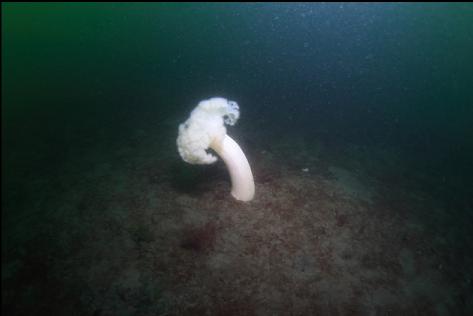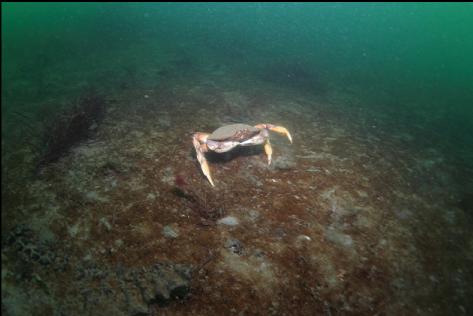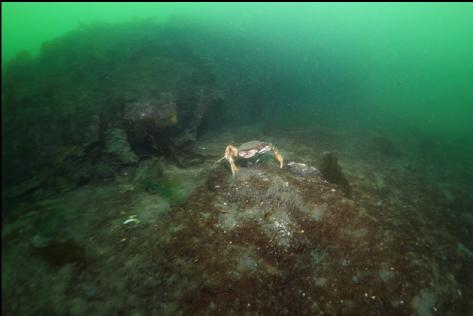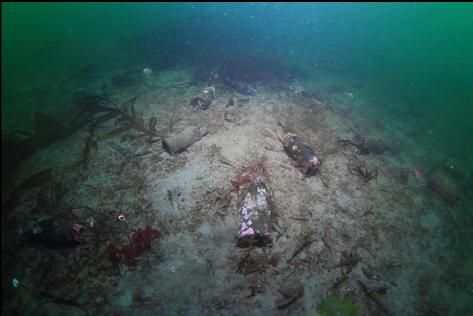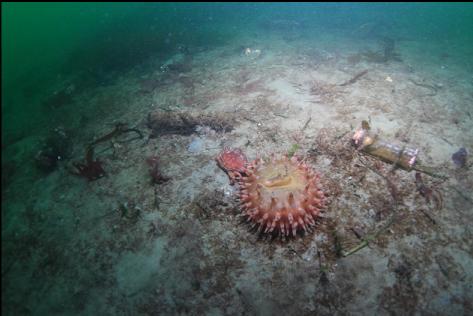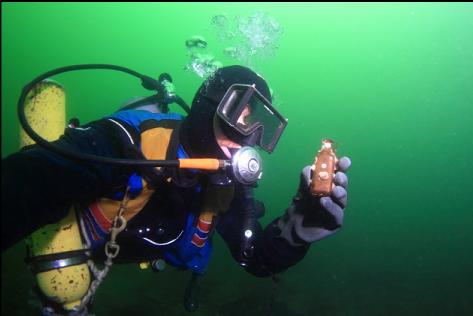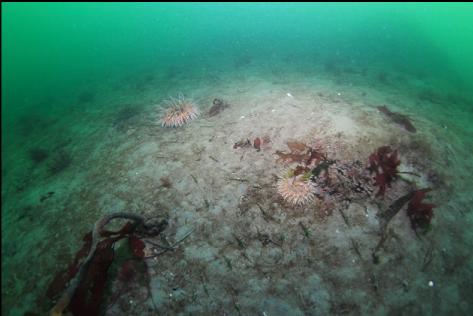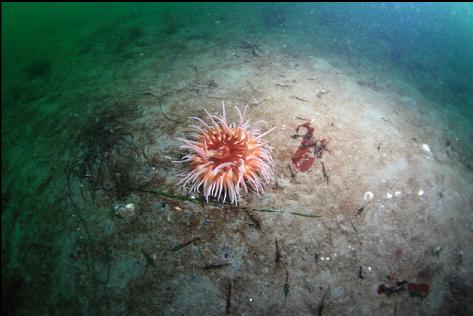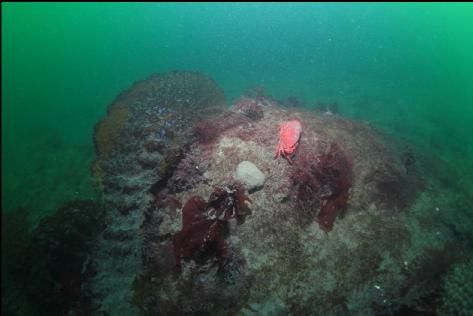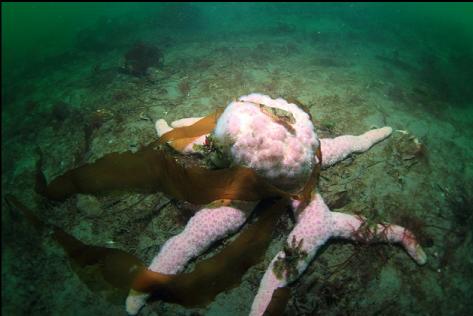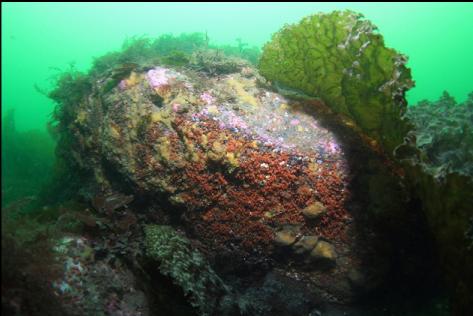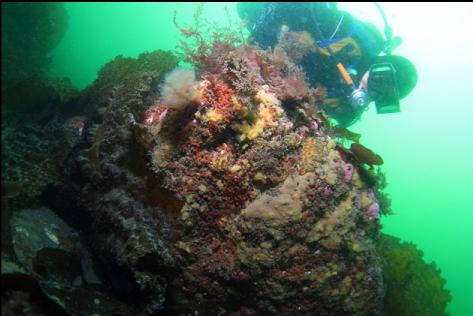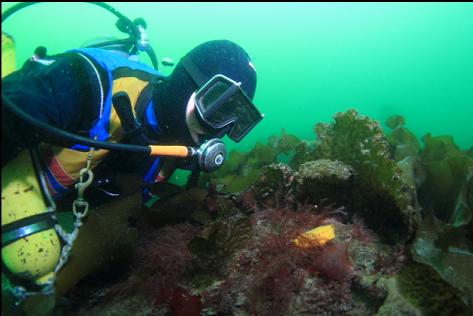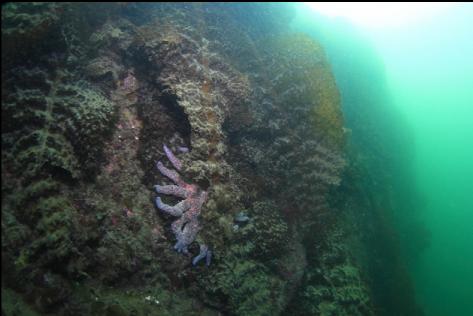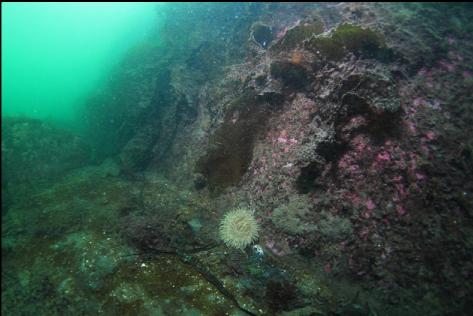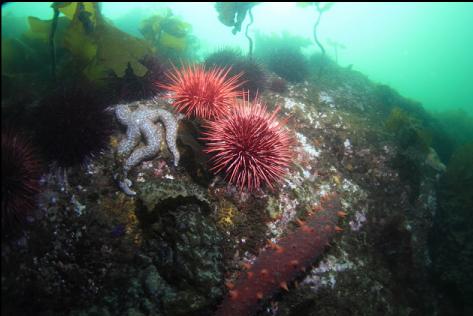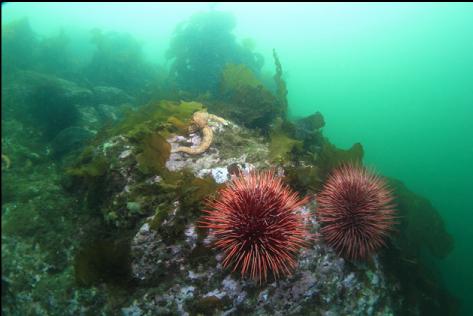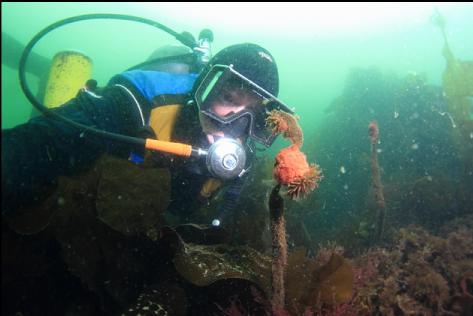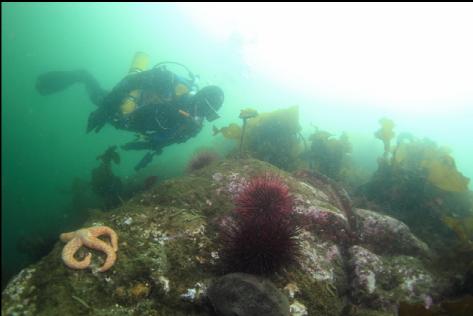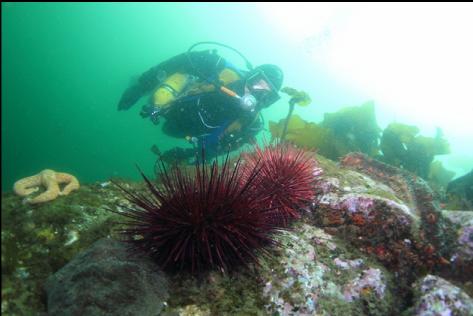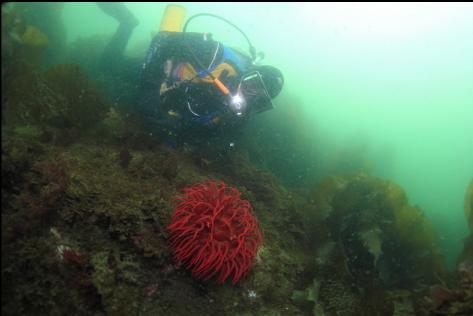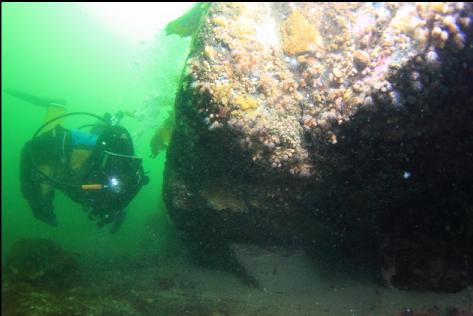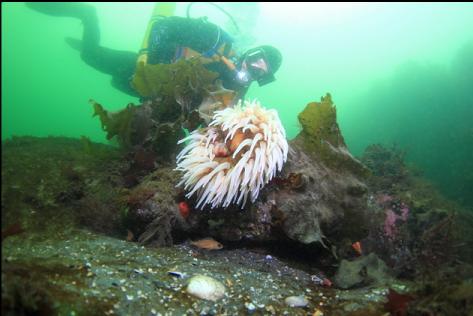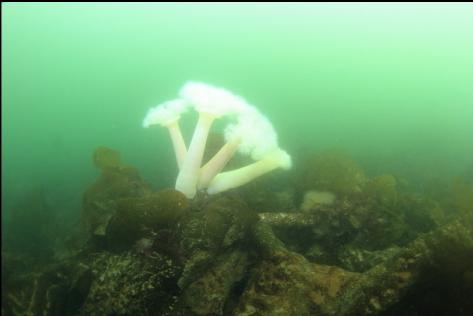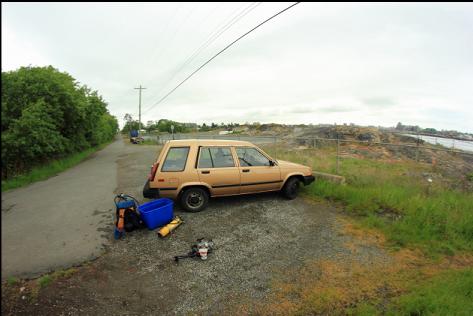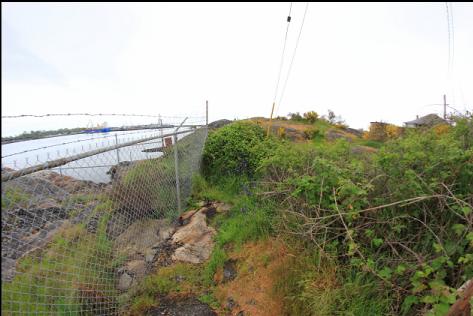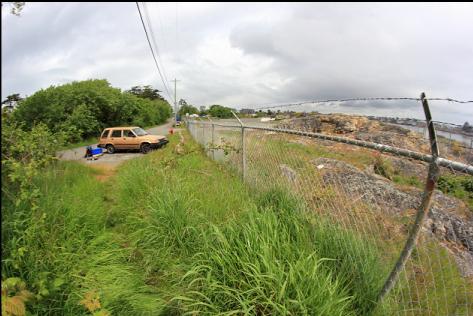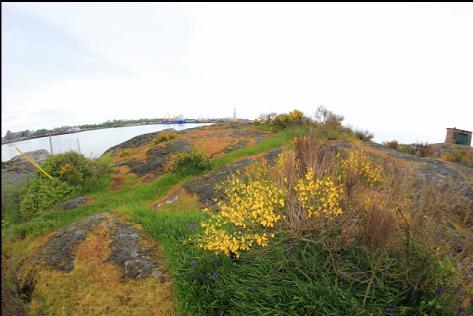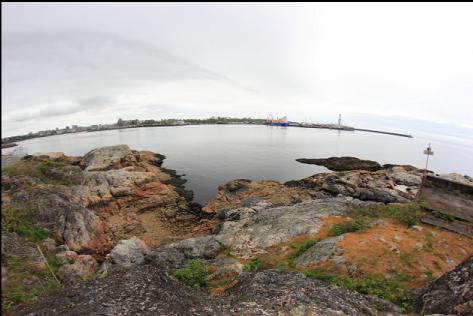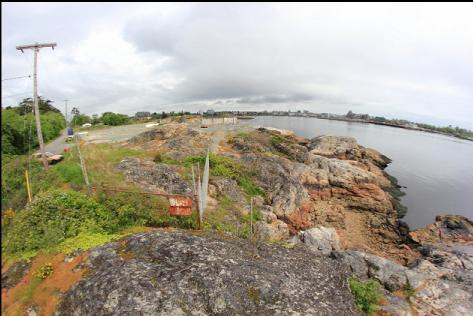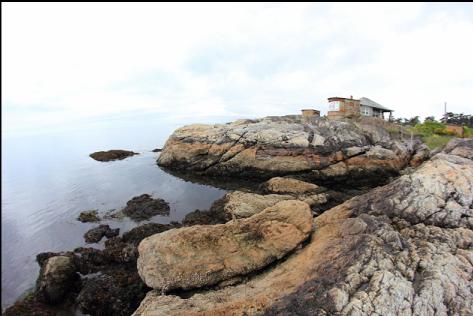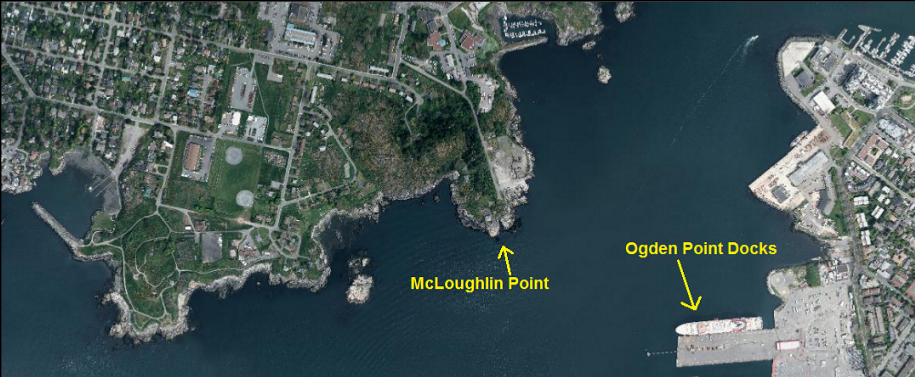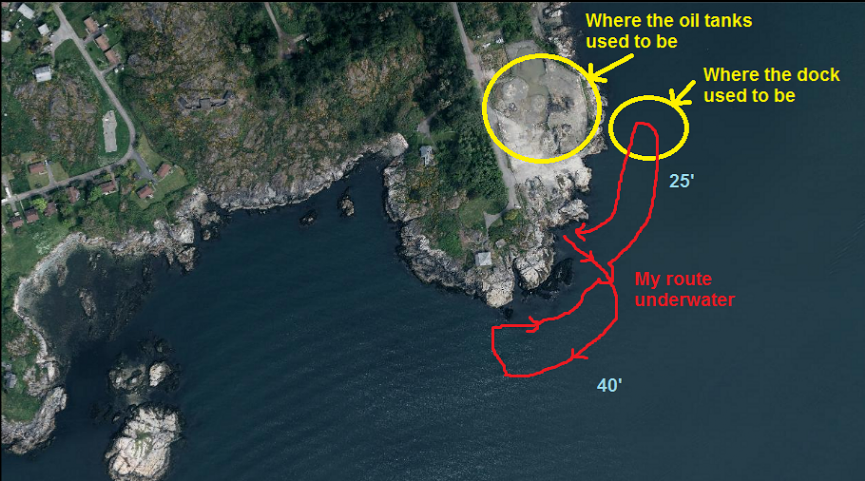I haven't been diving here in a few years. The oil tanks and the dock have been removed and the property is supposed to be the site of Victoria's new sewage treatment plant. I'm not sure what made me decide to dive here again. Maybe it's because I like to dive a site more than once before I write it off. I showed up here this time on May 12, 2013. I knew that this is probably the worst time to dive a shallow spot like this. Like last time, almost everything above 20-30' deep was covered with silty kelp so it was difficult to see anything. The visibility was also pretty terrible. Near shore, it was only 3-6'. I had to swim with my hand in front of me so I wouldn't bump into anything. At the base of the reefs (25-35' deep), the visibility improved slightly to about 10'. From what I could see under the kelp, the rocks were covered with grey silt. I could see some very-occasional fish-eating anemones. I swam out a bit over the muddy bottom at the base of the reefs. Ironically, there seemed to be more life here than on the rocks. There were hundreds of shrimp, a few dungeness and red rock crabs and scattered anemones (plumose, painted and sand). One area had lots of bottles. I swam back to the rocky area. There was a steep wall dropping to about 30' deep. Even the vertical rock surface seemed silty. There were several urchins on a corner of the wall. This corner seemed to have much less of the grey silt. I could see patches of pale pink rock (coralline algae?) showing through. I think the grey silt might be diatoms and the urchins were slowly grazing it away. This relatively silt-free patch had much more invertebrate life on it. There were several sea stars, California cucumbers and gumboot chitons. I see this a lot in the Strait of Juan de Fuca area. Urchins have a bad reputation for devastating kelp forests and forming "urchin barrens". I've never seen this happen myself. From what I've seen, the big red and purple urchins leave the kelp alone and clean up the coating of silt (diatoms?), leaving bare rock where other invertebrates can settle. I have seen the small green urchins on stalks of kelp, but not the big red/purple ones. Often the big urchins live well below the kelp line. Anyway, that's enough back-seat biology.
I wanted to see what was left where the dock used to be. I remember the pilings having much more life on them compared to the rest of the area. I swam around, but I couldn't find a trace of the pilings from the removed dock. The area was just as barren now as the rest of the dive. I did see a few plumose anemones on a piece of rusty metal. Now that I've been here twice, I can declare that there's not much of a point to dive here. Unless I discover that this was the site of an ancient Phoenician submarine base, I won't be diving here again.
